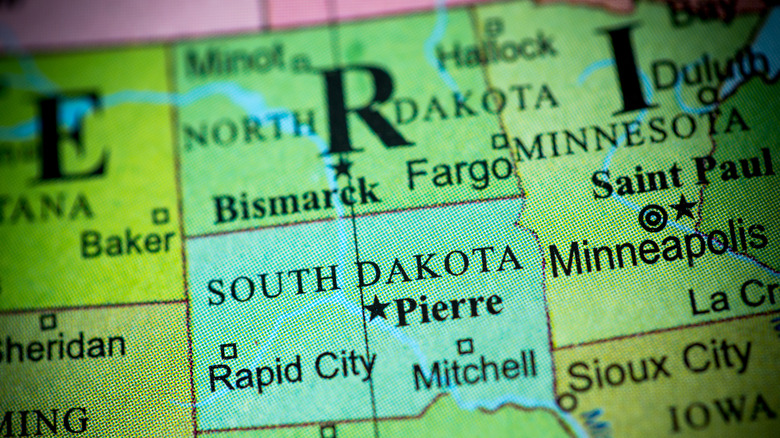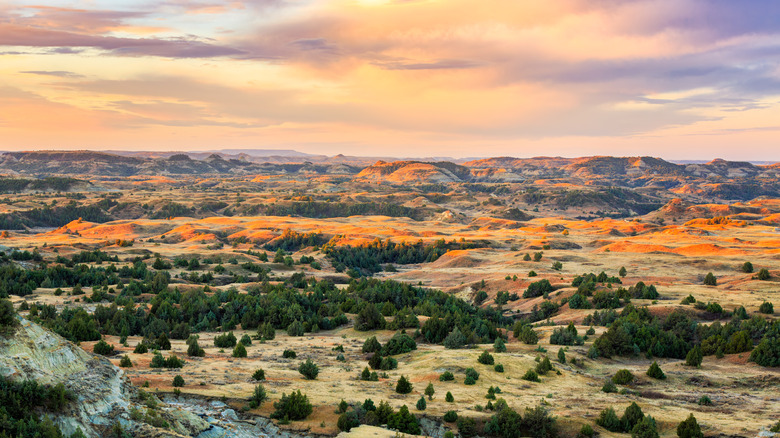The Real Reason The Dakota Territory Became North And South Dakota
Most U.S. states possess names that reflect their unique place among their peers, with many reflecting either their European or Indigenous heritage in some capacity. However, some seem to have forgone originality — namely the Carolinas, the Virginias, and the Dakotas, which all share a name yet are divided into distinct states. The British colony of Carolina was divided between 1710-1712 after the northern and southern population centers were deemed too distant and open to disagreement to warrant a single territory (via World Atlas).
Meanwhile, West Virginia split from then-Confederate Virginia during the Civil War in 1861 over several longstanding issues. Ultimately, as the region was less populous and had few slave owners, its residents felt underrepresented in the Virginia government compared to other counties in the state (though, according to Constitution Center, the issue of slavery itself was not settled in the new state despite joining the Union). The Dakota Territory was created in 1861 as well and continued as a single region until 1889 when it was divided into two states.
'Dakota' was too good a brand name to replace
The actual split of the Dakota Territory is rooted in regional differences which largely came about after the region's gold rush was underway (via Mental Floss). The new settlers came to develop their own economies and culture in the northern and southern halves of the territory. The north was more sparsely populated and viewed by the south as "wild." The latter by contrast had a much larger and denser population, enough that it met the demographic requirement for join the Union on its own. It tried repeatedly to do so, but was forced to either join as one state or wait until both regions had enough people to join separately.
Per the Associated Press, this criteria was met in 1889. President Harrison reportedly shuffled the papers so that nobody would know which was admitted first before welcoming the 39th and 40th states into the Union. When it came to what these new states would be named, the original plan was for the southern section to keep the name Dakota all to itself. However, because of the reputation enjoyed by products exported from "Dakota," neither state was willing to give it up and settled on a compromise (via Time).

